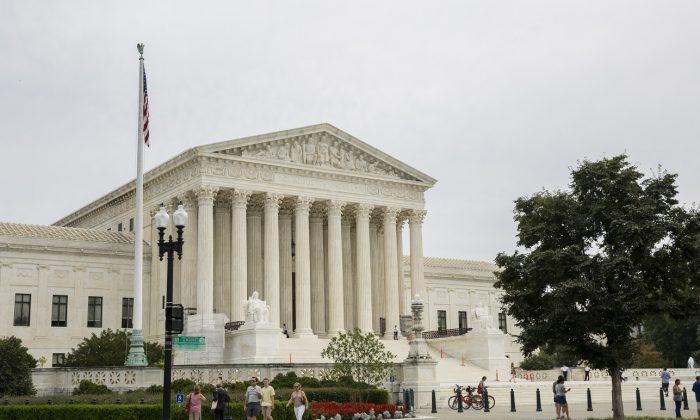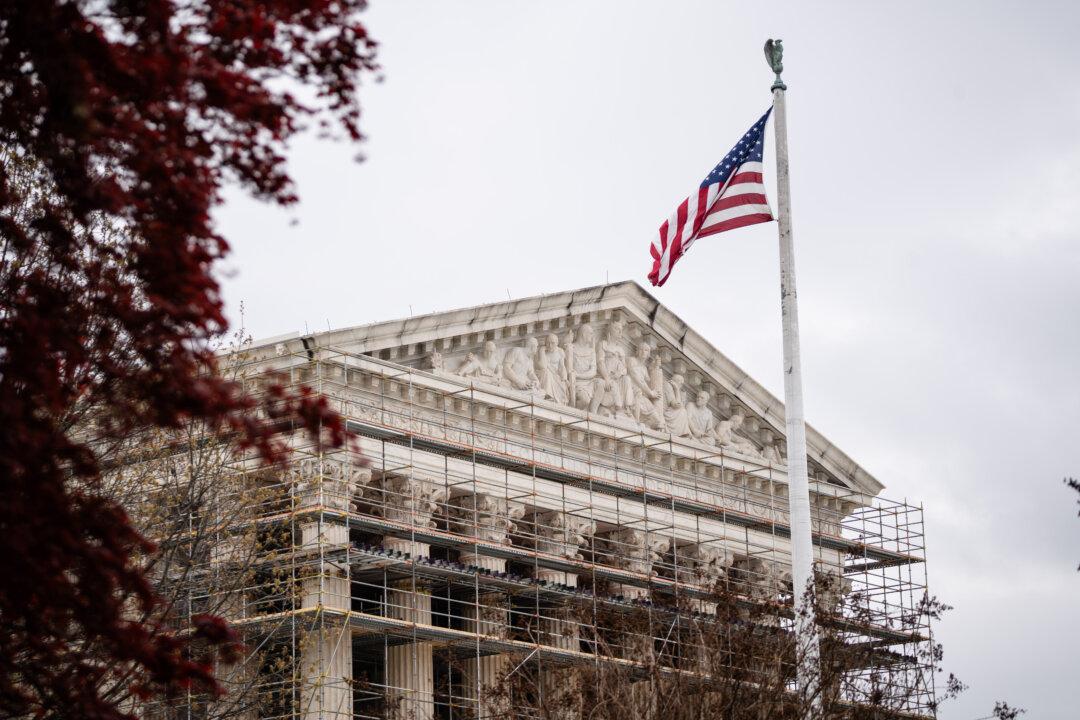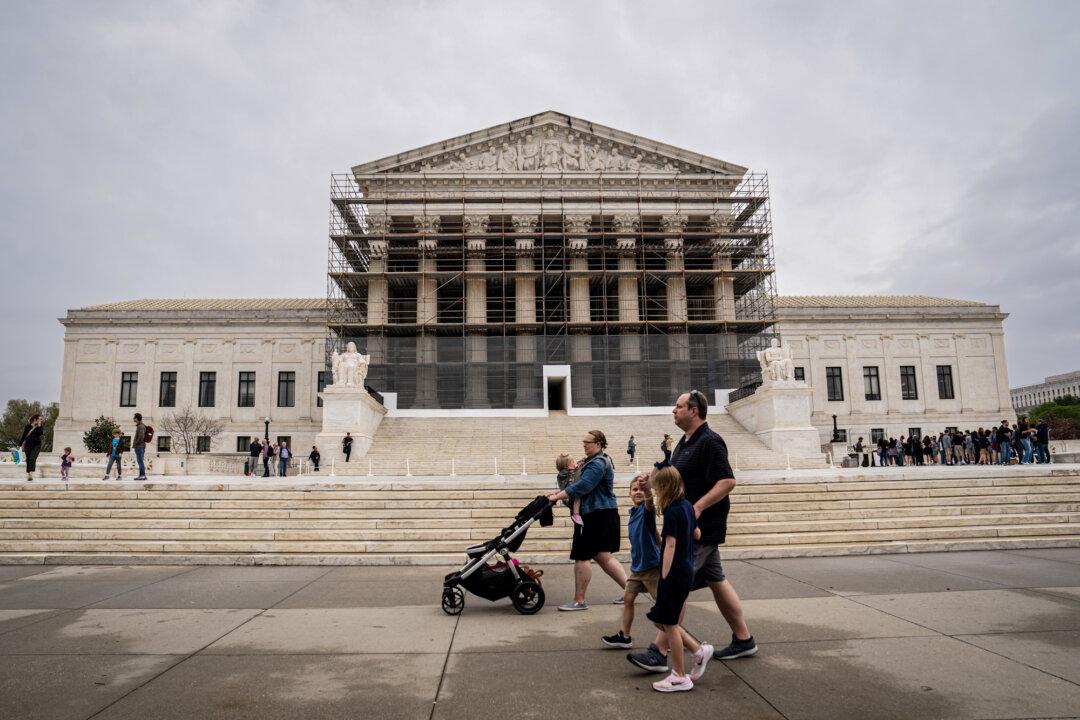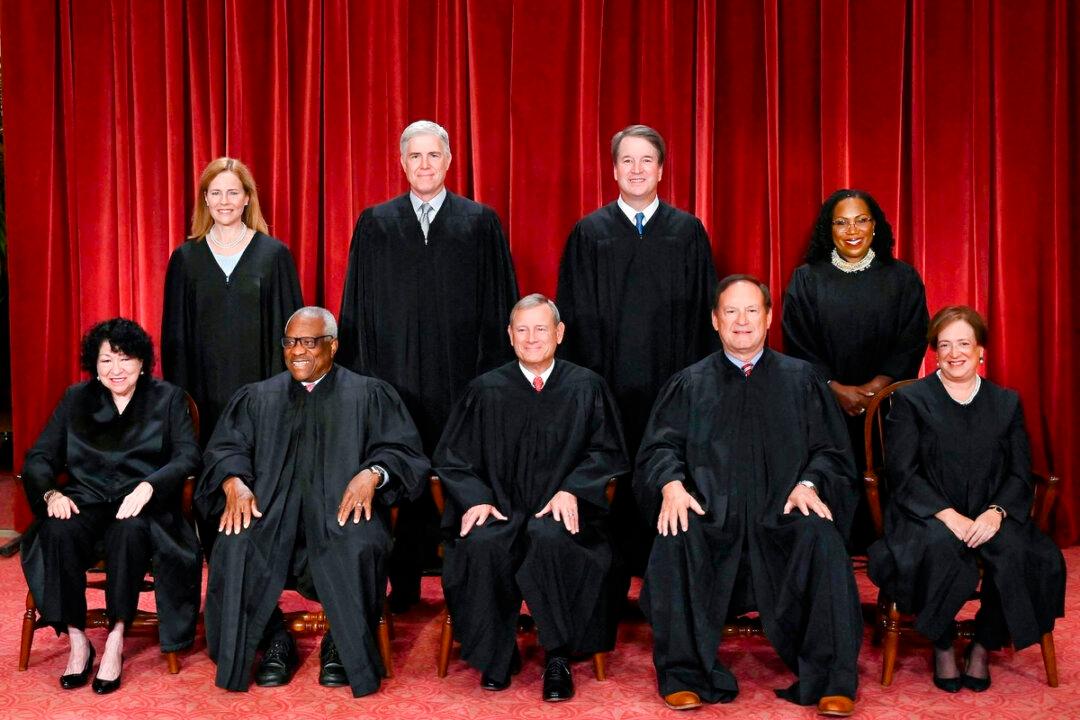WASHINGTON—Federal law bars Montana landowners from suing for damages to restore a polluted copper-smelting site to pristine, pre-smelting condition, which is beyond the current goal of the federal Superfund program that governs the remediation project, the Supreme Court heard Dec. 3.
The litigation is important because any decision the high court renders could give landowners greater incentives to seek restoration damages outside Superfund, which is administered by the U.S. Environmental Protection Agency (EPA), or provide clearer legal guidance to landowners.
The case is Atlantic Richfield Co. v. Christian. The company, known as ARCO, is a subsidiary of BP and the eighth-largest oil company in the United States.
“This case involves whether the hundreds of thousands of landowners on Superfund sites can bring state lawsuits to implement their own piecemeal hazardous waste cleanups,” ARCO lawyer Lisa S. Blatt said during oral arguments.
“The answer should be no,” she added.
Later in the hearing, Justice Sonia Sotomayor seemed sympathetic.
“It seems to me that ... if you own a piece of land ... the EPA has been fixing ... that whether you’re responsible financially for the cleanup, that you shouldn’t be able to interfere with the EPA’s efforts.”
ARCO purchased Anaconda Minerals Co. and its circa-1884 copper smelters in Deer Lodge County, Montana, in 1977. The smelters continued operating until 1980. The 300-square-mile cleanup site is polluted with arsenic and other toxic substances.
The Comprehensive Environmental Response, Compensation, and Liability Act (CERCLA), also known as the Superfund law, gives the EPA the authority to control environmental remediation efforts and recover costs from the parties responsible for the pollution.
ARCO has spent $470 million on an EPA-directed cleanup at the site, which was designated under CERCLA in 1983. But landowners affected by the pollution sued in 2008 in state court for $58 million in damages to restore the land to its condition before smelting began in 1884, something they argue state law allows them to do.
EPA argued CERCLA, a federal statute, barred the state-level restoration claims and that the landowners’ plan would harm the environment.
The trial court agreed with the landowners that they should be able to pursue damages. So did the Montana Supreme Court, in defiance of several federal appeals court decisions. ARCO appealed to the Supreme Court, which on June 10 agreed to hear the case.
Sometimes leaving toxins in the ground is the best option because removal puts communities at risk, Blatt told the justices.
“Whether these risks are worth any benefits should be evaluated by EPA, not juries on an ad hoc basis,” she said.
Joseph Palmore, the lawyer representing landowners, told the court the EPA tightly controls almost everything at the cleanup site.
“ARCO says remedial action covers virtually any physical action with respect to hazardous waste at the site, including storage, excavation. ... They’re saying that ... my clients in Opportunity, Montana, have to get permission from EPA in Washington if they want to dig out part of their backyard to put in a sandbox for their grandchildren.”
Chief Justice John Roberts told Palmore that disturbing “arsenic-infected land ... would not only harm your neighbors but could harm people many, many miles away.”
“You can’t overlook the fact that that is going to have harmful effects on everybody else around you,” Roberts said.
Justice Elena Kagan asked Palmore, “why should the onus be on EPA to figure out who’s creating sandboxes?”
Congress didn’t intend to give the EPA complete control, Palmore said. “It went out of its way to allow state law over these traditionally state law subjects to continue.”
Even so, Justice Brett Kavanaugh said, “your parade of horribles can still come true with EPA being aggressive in getting to all those places.”





